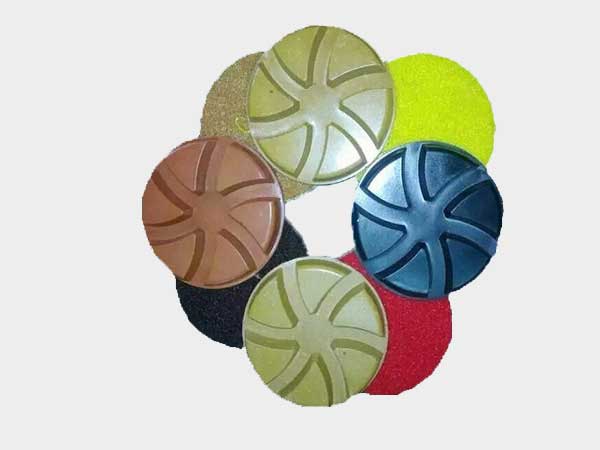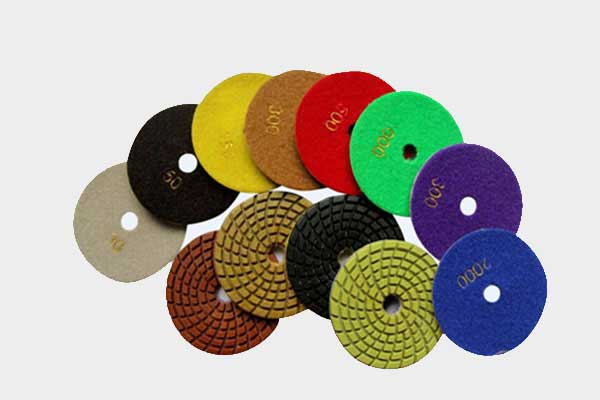The floor is used frequently in the building, so it is easy to be damaged. Due to the limitation of process technology, many old floors (such as epoxy, emery, terrazzo, floor tiles, cement floor, etc.) gradually expose their defects, and there are differences. The problem of form and degree, so to a certain extent, it needs to be refurbished. Today, diamond water mill manufacturers will come to introduce you to several renovation construction techniques commonly used in industrial floor renovation.
Epoxy floor construction technology
1. Plain treatment: grinding, repairing and dust removal according to the condition of the plain
2. Epoxy Primer: Adopts strong epoxy primer roller coating to improve surface adhesion.
3. Epoxy approved soil: According to the actual needs of construction of several passes, it is required to achieve flat and no holes, no batch of knife and sand printing
4. Epoxy topcoat: two coats of solvent-based epoxy topcoat or anti-slip topcoat.
5. Construction is completed: people can be loaded after 24 hours, and pressure can be heavy after 72 hours. (25 ° C prevails, the opening time at low temperature needs to be moderately extended).

Concrete seal curing agent floor (mirror type) construction technology
1. Grass-roots treatment: before construction, clean and clear the sundries, oil, and curing agents on the ground. Cement-based repair mortar was used to repair the pits and cracks on the ground and cured for 3 days.
2. Grinding the ground: The surface quality is poor and rough: install a rough diamond module on a water grinder (7.5KW machine), add water to grind the ground, and after basic smoothing, change the fine grinding heads separately, and finely grind the ground, The same process is water milled) until the floor is smooth. After grinding the ground, clean the ground with water, and use a vacuum cleaner to suck up the sewage. For better, smooth new wear-resistant floors, you can directly apply concrete seal curing agent.
3. Brush concrete seal curing agent: After the floor is cleaned and the surface is allowed to air dry, brush concrete seal curing agent can be applied. Use a roller or sprayer to evenly apply the curing agent to the ground, and the average application amount is 10 ㎡ / kg. If the base surface is poor and has strong permeability, it must be painted twice after 1-2 hours; after about 1-2 hours (before the material is dry and shiny), spray some water on the ground to wet the material. Use a broom or a floor to scrub and wash the surface to allow the material to penetrate the ground, and repeat 2-3 times, then rinse the ground to remove excess material on the surface.
4. Ultra-fine polishing (mirror fruit): To improve the gloss and light fruit of the ground to reach the mirror fruit, a 1.1KW high-gloss polishing machine can be used, and 500-mesh, 1000-mesh, 2000-mesh, and 3000-mesh diamond polishing pads can be adhered to the disc. Watering ultra-fine polished floor.

Wear-resistant floor construction technology
1. Removal of scum: Slowly and evenly destroy scum on the surface of a single concrete with a machine equipped with a disc.
2. Spread material: Spread the specified amount of 2-3 wear-resistant material on the concrete surface in the initial setting stage. After the abrasion-resistant material absorbs moisture, the mechanical operation of adding a disc is performed, and when the abrasion-resistant material is hardened to a fixed stage, the abrasion-resistant material spreading operation is performed twice.
3. Disc operation: After the abrasion-resistant material absorbs moisture, perform mechanical operations for installing discs at least three times. The speed of the machine will be degraded depending on the hardening of the concrete. The mechanical concrete operation should be crisscrossed.
4. Finishing the surface: The final modification of the wear-resistant flooring material is processed using mechanical concrete or manual concrete. When polishing, it should be criss-crossed. The angle of the iron plate and the speed of the machinery should be adjusted and cut according to the hardening of the ground surface. .



